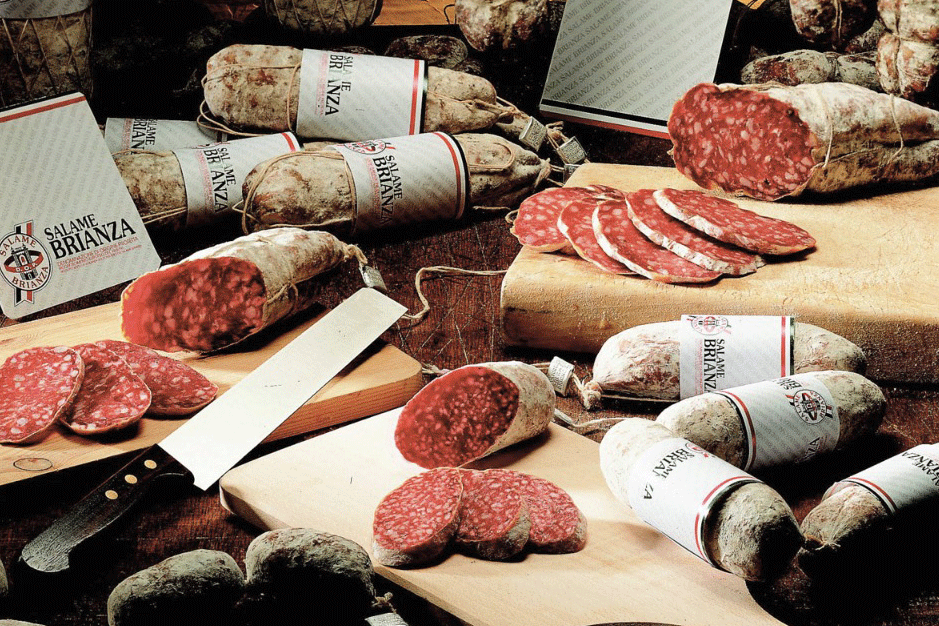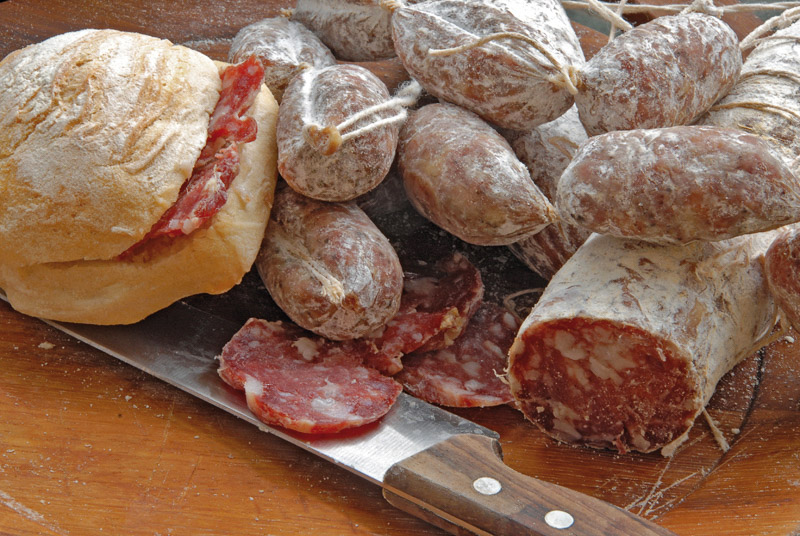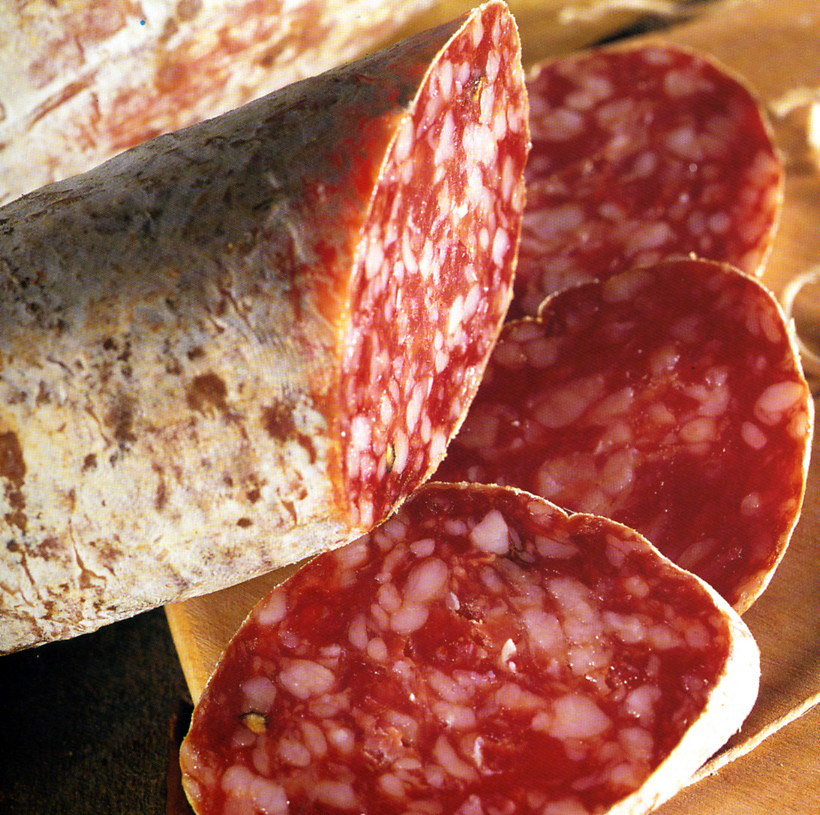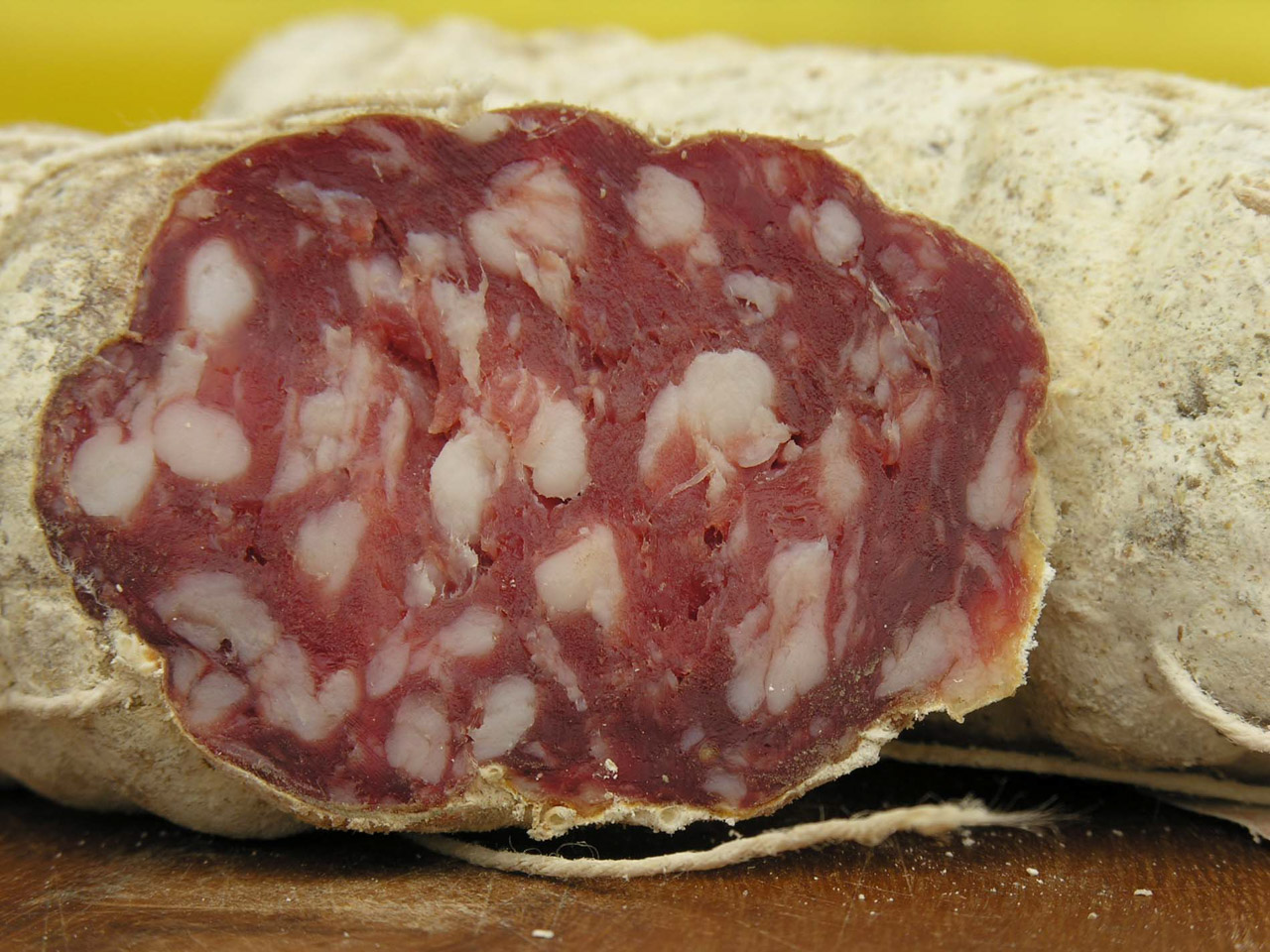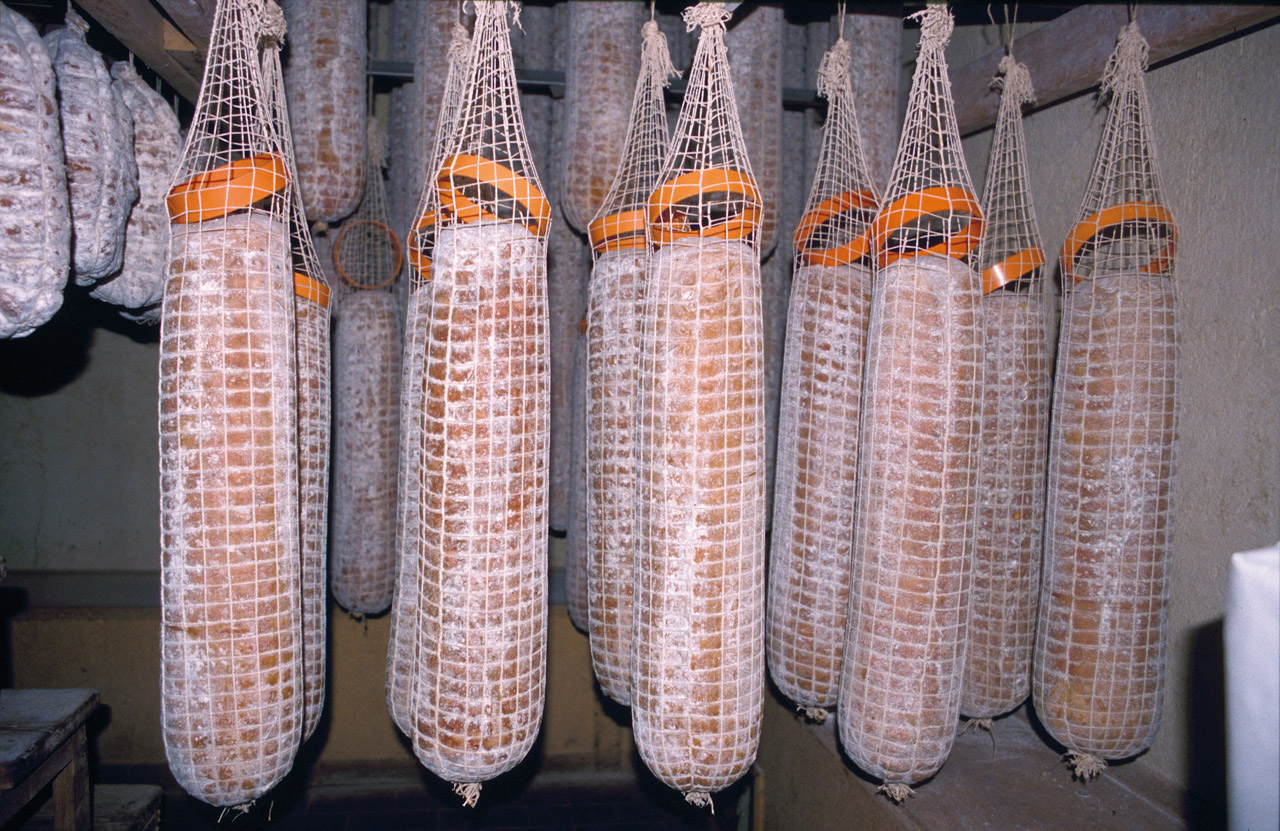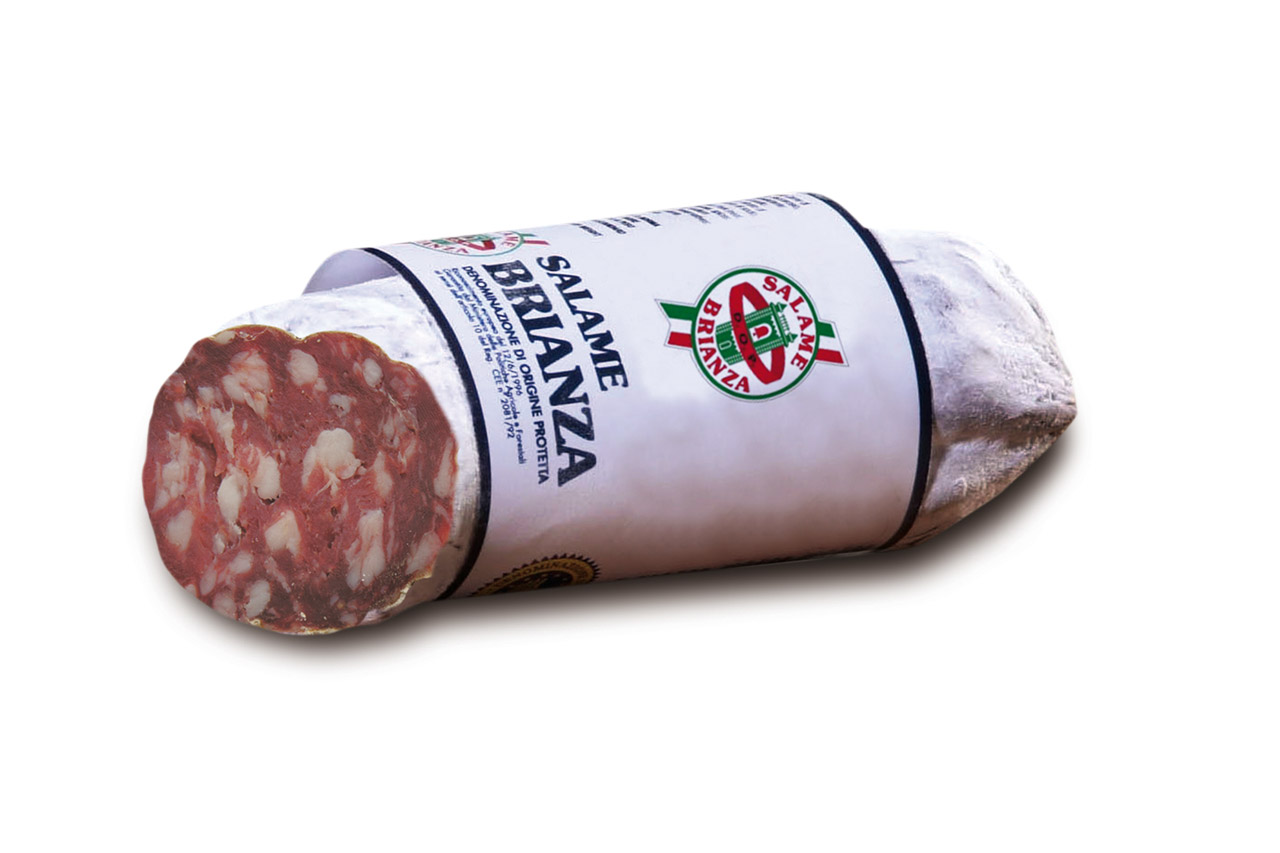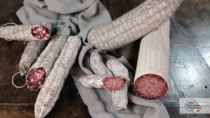Description
Salame Brianza PDO is a fine or large-grained stuffed charcuterie product, obtained from a mixture of pork cuts from animals belonging to the Italian Large White, Landrace and Duroc breeds, or other breeds similar to the Italian heavy pig.
Production Area
The production area of Salame Brianza PDO is within the territory of Brianza, which incorporates the provinces of Monza-Brianza, Como, Milan and Lecco, in the Lombardy region. The farms where the pigs used for production are reared must be located in the Lombardy, Emilia-Romagna and Piedmont regions.
Production Method
The lean part of the mixture is made up of deboned and denervated shoulder and diced ham, and the fat part of belly and/or gullet without soft fat; leftover trimmings can also be used. The cuts are then brought to freezing or refrigeration temperature, after which, they are minced using moulds with 4-4.5 mm (fine-grained) and 7-8 mm (large-grained) holes. The mince is then mixed with salt and pepper. The mixture must then be inserted into a natural or artificial casing and either tied with string or placed in a net. The drying process allows for the rapid dehydration of the superficial parts in the first few days. This is followed by branding, through affixing the identifying seal with the Salame Brianza designation and the PDO mark. The curing process varies according to the diameter of the fresh salami. It takes place in well-ventilated rooms with a temperature between 9-13°C, and can last from 14 to 100 days.
Appearance and Flavour
Salame Brianza PDO has a cylindrical shape. It is compact and has a firm consistency. When sliced, the surface is homogeneous with a uniform ruby-red colour, with fatty areas without rancid parts. It has a characteristic delicate fragrance and a sweet taste that is never sour.
History
The first references to the origins of Salame Brianza PDO date back to the mid-17th century, and were made by Ortensio Stefano Lando, a Milanese historian and scholar, and Lucrezio Gonzaga’s assistant. More detailed information can be found in works by Riberti, a 19th century writer. Later on, Brianza salami’s growing fame was also confirmed by its presence at the Universal Exhibition in Paris in 1900. However, it appears that the salami wasn’t considered a typical product of the area until the 1970s, considering the fact that Ottorina Perna Bozzi, author of Vecchia Brianza in cucina (1968), did not list it among Brianza’s traditional charcuterie products, citing others instead.
Gastronomy
Whole Salame Brianza PDO should be kept in a cool and well-ventilated place, or in the refrigerator, wrapped in a cloth. In order to maintain the gustative characteristics, it is best to slice Salame Brianza PDO with a knife shortly before serving. The product can be eaten in various ways. When served on its own it is best to cut the slices thickly. Sliced thinly, on the other hand, it can be served with fresh or mature cheeses, or it can be diced and used to enrich mixed salads. It is also delicious with fresh fruit, such as kiwi, or hot polenta.
Marketing
The product is marketed as Salame Brianza PDO. It is sold whole, in pieces or sliced, unpackaged, vacuum-packed or packed in a modified atmosphere.
Distinctive Features
The particular climate of the Lombardy hills, which is ideal for the preservation of pig meat, contributes to the special organoleptic qualities of Salame Brianza PDO.






